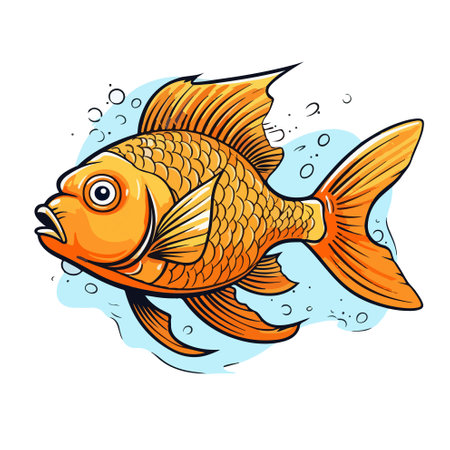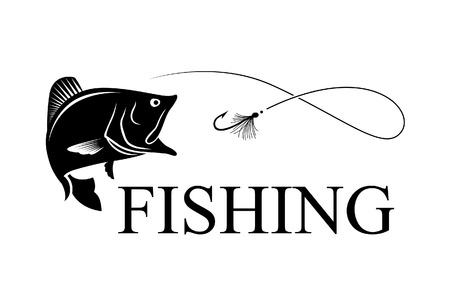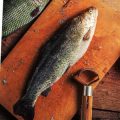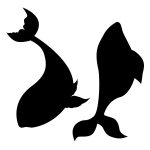1. Understanding Water Temperature Under the Ice
When a lake freezes over in winter, the water below the ice doesnt all stay at the same temperature. In fact, theres a unique layering of temperatures that forms under the surface. This is called a temperature gradient, and it plays a huge role in where fish hang out during ice fishing season.
How Temperature Layers Work
Water reaches its maximum density at 39°F (4°C). That means even under a thick layer of ice, the water right near the bottom of the lake usually stays around this temperature. The colder water—closer to 32°F (0°C)—sits just under the ice. These layers don’t mix easily in winter because there’s no wind or wave action to stir them up.
| Layer | Approximate Temperature (°F) | Description |
|---|---|---|
| Top (just under ice) | 32–34°F | Coldest layer, low fish activity |
| Middle | 34–38°F | Transition zone; some fish movement |
| Bottom | 39–40°F | Most stable temperature; common fish zone |
Thermoclines: Do They Exist in Winter?
A thermocline is a layer where water temperature changes rapidly with depth. While thermoclines are prominent in summer, theyre much weaker—or even nonexistent—during winter. Still, minor gradients can influence fish behavior slightly, especially in deeper lakes.
Oxygen Levels and Fish Activity
Fish need oxygen just like we do, and oxygen levels change during winter months. Once a lake freezes over, there’s no more oxygen entering from the air. Over time, oxygen gets used up by decaying plants and animals on the lake bottom. This can cause low-oxygen zones, especially in shallow or weedy lakes.
Common Oxygen Patterns Under Ice:
- Deep Lakes: Tend to maintain better oxygen levels through winter.
- Shallow Lakes: May experience oxygen depletion (“winterkill”) by late season.
- Lakes with Snow-Covered Ice: Less sunlight = less plant photosynthesis = lower oxygen.
Why It Matters for Ice Fishing
If youre wondering where to drill your hole, think about both temperature and oxygen. Most active fish will be found closer to the bottom where temperatures are stable and oxygen is still available—especially early to mid-winter. As winter progresses, watch for signs that fish are moving shallower or closer to inflow areas where fresh oxygen might enter.
2. How Fish Behavior Changes in Cold Water
As winter sets in and lakes freeze over, the underwater world goes through some serious changes. For ice anglers, understanding how fish respond to colder temperatures is key to finding success on the ice. Fish don’t just disappear—they adapt. Let’s break down how they do it.
Metabolism Slows Down
Fish are cold-blooded creatures, which means their body temperature and metabolic rate are directly influenced by their environment. As water temperatures drop, fish metabolism slows significantly. This means:
- They require less food to survive.
- They digest food more slowly.
- They become less aggressive in chasing bait.
This change in metabolism affects not only how much fish eat but also when and how often they feed. Timing your fishing trips during peak feeding windows—typically early morning and late afternoon—can make a big difference.
Feeding Habits Shift
In cold water, fish tend to be more selective with what they eat. They prefer smaller, slower-moving prey that requires less effort to catch. Using downsized lures and presenting them slowly is often more effective than fast or aggressive jigging techniques.
| Water Temperature (°F) | Fish Activity Level | Bait/Lure Recommendation |
|---|---|---|
| 32–39°F | Very Low | Tiny jigs, live bait like waxworms or minnows |
| 40–45°F | Low to Moderate | Spoons, small plastics with subtle action |
| >45°F | Moderate | Slightly larger jigs, active jigging techniques |
Movement Patterns Change
You’ll also notice that fish don’t roam as widely under the ice as they might in open water seasons. Instead, they conserve energy by staying near structure or deeper basins where water temperatures remain more stable. Fish like walleye, perch, and crappie may gather in schools and hold tight to underwater features such as drop-offs, humps, or submerged vegetation.
Key Locations for Winter Fish
- Basin areas: Great for suspended panfish like crappie.
- Dropped ledges: Target walleye during low-light hours.
- Coves with vegetation: Bluegill and perch love these spots for cover and food.
The Bottom Line for Ice Anglers
If you’re out on the ice and not getting bites, consider adjusting your approach based on these behavioral changes. Slow down your presentation, scale down your gear, and focus on high-probability locations based on seasonal patterns. The better you understand how fish adapt to cold water, the more effective your time on the ice will be.

3. Seasonal Ice Fishing Patterns and Fish Locations
Understanding how fish move and behave throughout the ice fishing season is key to landing more catches. Species like walleye, perch, and northern pike dont just stay in one place all winter — they shift their locations and feeding habits based on changes in ice thickness, light penetration, oxygen levels, and food availability. Let’s break it down by season.
Early Ice (First Ice)
This is often considered the most productive time of the season. The ice is newly formed, usually clear, and oxygen levels are still high across the lake. Fish are active and close to where they were during late fall.
Fish Behavior & Locations
| Species | Typical Depth | Location | Behavior |
|---|---|---|---|
| Walleye | 10–20 ft | Near weed edges and drop-offs | Active during low-light hours |
| Perch | 5–15 ft | Shallow flats with vegetation | Schooling and aggressive feeders |
| Northern Pike | 5–12 ft | Coves and bays near weeds | Ambush predators; very active |
Mid-Season Ice (Midwinter)
This is typically the toughest part of the ice fishing season. Snow cover increases, reducing light penetration. Oxygen levels start to drop in shallow areas, pushing many fish deeper or into areas with better conditions.
Fish Behavior & Locations
| Species | Typical Depth | Location | Behavior |
|---|---|---|---|
| Walleye | 20–30 ft | Main lake basins and deeper humps | Bite slows down; focus on dusk/dawn periods |
| Perch | 15–30 ft | Mud flats and deep basins | Tighter schools; less aggressive but catchable with finesse techniques |
| Northern Pike | 10–20 ft | Sparse weed beds or structure near deeper water | Slightly less active but still feed regularly during daylight hours |
Late Ice (Last Ice)
This period can rival early ice for productivity. As snow melts and sunlight reaches the water again, oxygen levels rise and baitfish move back to shallower areas—followed closely by predators.
Fish Behavior & Locations
| Species | Typical Depth | Location | Behavior |
|---|---|---|---|
| Walleye | 10–20 ft or shallower near sunset | Migrating toward spawning areas (river mouths, rocky shorelines) | Aggressive pre-spawn feeding at dusk/dawn or overnight hours |
| Perch | 5–15 ft | Sandy or gravel-bottom shallows with warming water temps | Larger schools return; actively feeding throughout the day |
| Northern Pike | <5–10 ft> | Migrating into shallow bays for pre-spawn staging near vegetation or structure | Aggressive; excellent time for tip-ups with live bait |
| Ice Thickness | Condition | Recommended Activity |
|---|---|---|
| Less than 4 inches | Unsafe | Avoid walking or driving |
| 4 inches | Generally safe for foot traffic | Ice fishing, walking |
| 5–7 inches | Moderate strength | Snowmobiles or ATVs |
| 8–12 inches | Strong ice | Small cars or light trucks (with caution) |
| 12–15+ inches | Very strong ice | Heavier vehicles (check local regulations) |
Recognizing Ice Quality and Hazards
Not just thickness—ice quality matters too. Clear, blueish ice is usually the strongest. White or milky ice has air pockets and tends to be weaker. Slushy or honeycombed ice should always be avoided. Be especially cautious near moving water like inlets, outlets, or springs where ice forms unevenly.
Common Hazards to Watch For:
- Cracks and Pressure Ridges: These form as ice expands and contracts with temperature changes and can be weak zones.
- Wet or Dark Spots: Indicate thin ice or areas beginning to melt.
- Snow Cover: Insulates the ice, slowing its formation and hiding dangerous spots underneath.
Natures’ Clues That Point to Fish Activity
The environment around you offers signs that can guide where to fish safely and effectively. Birds diving into open water may indicate baitfish presence. Areas with underwater vegetation often hold oxygen-rich water where fish gather during winter.
Environmental Indicators Table:
| Natural Sign | What It Tells You |
|---|---|
| Diving birds (like loons or gulls) | Baitfish are present; predators likely nearby under the ice. |
| Slight current under the surface (near inlets/outlets) | Poor ice quality but often attracts active fish due to oxygen flow. |
| Aquatic vegetation visible below clear ice | Lively ecosystem; fish may use this area for cover and food. |
| Noisy or cracking sounds from the ice | This can be normal expansion but stay alert for sudden changes. |
Pro Tip:
If youre new to reading the ice, go with a buddy who knows the area well or consult local bait shops—they often have up-to-date info on safe access points and recent conditions.
The more time you spend observing natural patterns and practicing safety checks, the more confident youll become at choosing good—and safe—ice fishing locations throughout the season.
5. Gear and Techniques Tailored to Seasonal Changes
As winter progresses, the behavior of fish under the ice shifts in response to water temperature, oxygen levels, and food availability. That means your gear and techniques should also evolve throughout the season. Understanding when and how to switch up your approach can make all the difference between a slow day on the ice and a full bucket of fish.
Early Ice: Fast Action Requires Light Tackle
In early winter, oxygen levels are still high and fish like walleye, perch, and crappie tend to be more active. During this time, lighter rods, sensitive spring bobbers, and smaller jigs work best. Use flashy lures or small spoons to trigger bites.
Recommended Setup for Early Ice:
| Gear | Suggestion |
|---|---|
| Rod | Ultralight to Light Ice Rod (24-28″) |
| Line | 2-4 lb test fluorocarbon |
| Lure/Bait | Tungsten jig with wax worms or minnows |
Mid-Winter: Slow Bite Demands Finesse
By mid-season, the bite typically slows down due to lower oxygen levels and colder temperatures. Fish become more lethargic and selective. This is when downsizing your presentation and using a slow jigging motion can help trigger strikes.
Mid-Winter Jigging Tips:
- Use small jigs tipped with live bait like spikes or wax worms.
- Try dead-sticking (holding the rod still) with one line while lightly jigging another.
- Add scent or soft plastics to increase attraction.
Late Ice: Fish Feed Up Before Spring
Toward the end of ice season, rising sunlight and melting snow increase oxygen levels and kickstart feeding activity again. Fish begin moving into shallower waters, making this a great time for aggressive tactics.
Recommended Setup for Late Ice:
| Gear | Suggestion |
|---|---|
| Rod | Medium-Light Ice Rod (26-30″) |
| Line | 4-6 lb test monofilament or braid with fluoro leader |
| Lure/Bait | Spoons, rattle baits, or larger minnows |
Bait Selection by Season
Your choice of bait should match both the species youre targeting and their seasonal behavior. Heres a quick guide:
| Season | Bait Type | Best For |
|---|---|---|
| Early Ice | Minnows, Wax Worms, Small Plastics | Panfish, Walleye, Perch |
| Mid-Winter | Spikes, Scented Plastics, Dead Baits | Panfish, Trout, Crappie |
| Late Ice | Larger Minnows, Spoons with Rattles | Northern Pike, Walleye, Bass |
The Bottom Line: Stay Flexible and Observant
The key to successful ice fishing throughout the season lies in adapting your gear and techniques to match changing conditions. Pay attention to water clarity, depth changes, fish activity levels, and weather patterns — then adjust accordingly. A flexible angler is often a successful one out on the ice.


